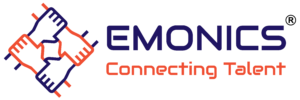The New Importance of Virtual Onboarding
Except under the best terms, starting a job is stressful. You’re looking at a pretty intimidating mix for the new hire! Add to that a global pandemic and remote jobs! For an employee at your company, the first day sets the tone. And while the onboarding system has been realigned to virtual, there is still no reason not to put the best foot forward.
According to many businesses, after three years, workers who had the advantage of organized onboarding were almost 60 % more likely to stay with the same company. It will have a major effect on commitment, efficiency, and potential how you usher an employee in. Therefore, in the absence of physicality, to allow for inclusion, greater emphasis needs to be put on onboarding. It will take some time, of course, to sort out the kinks, but that is why we are here to help.
Communication
When it comes to virtual onboarding, there is no such thing as under-communicating. It is imperative that you keep in constant touch with your new recruit without face-to-face meetings and sly water-cooler conversations. It can be a very isolated time, so make sure they don’t feel they are alone. Connect them to larger business chat groups, introduce them to the virtual catch-up squad, notify them, call them. It would be helpful also to allocate a virtual pal. Someone who can serve as a sounding board to sort out all a company’s little idiosyncrasies. You want to be supportive and available, basically. What managers are supposed to do has not changed much, as LinkedIn says. But the way he has.
Spent time
We know that it is preferable to learn important knowledge over time rather than cramming it in over the span of a few days. It leads to a higher and more efficient retention rate, so spreading the virtual onboarding program out makes sense. An Indeed study showed that 44 percent of new employees who quit within the first six months said that they could have been helped to continue longer by specific instructions about what their roles were. Don’t hurry then! Send along with convenient, easily digestible guides to relieve first day jitters by relevant documents to peruse before their start date. Give them time to acclimate to the unfamiliar without too much discomfort. Finally, to allow for versatility, try to divide learning into manageable short bursts. A distinct beast is operating from home, so keep this in mind.
Technology
Technology is the immediate bridge between effective and ineffective virtual onboarding. It’s going to be a bit of a bumpy ride without smooth access to the required apps and applications on the first day. Instead, before starting, ensure that a laptop is delivered to the new hire’s house. Have it pre-loaded, explaining sign-ins and other downloads, with all the required systems that they would require. The simpler and simpler this method is, the quicker they are going to integrate. To iron out some glitches, even consider a test call prior to the official start date.
Workplace culture
It was found that 70 percent will quit a business over poor culture in a recent survey of 3,500 U.S. professionals. While the inside of the office may never be seen by a new employee, it is so important to keep the underlying culture and values front and center. You can start by outlining what the company’s ethos is. Go through and intertwine the goals and motives into the entire orientation. But note that little things matter too. Organize the new employee’s business swag bag and make them be an ambassador from day one! Range, however, will always be a challenge. To foster a sense of belonging, make sure they are kept up to date with any social events.
Conclusion
Emonics observed that at the beginning of a new career, excitement for work peaks but shortly afterward wanes by around 22 percent. It has never been more imperative to ensure that workers feel respected and related when remotely onboarding. It can throw up a whole new set of problems, but you can easily side-step them by taking the time to streamline your onboarding digital implementation plan.














